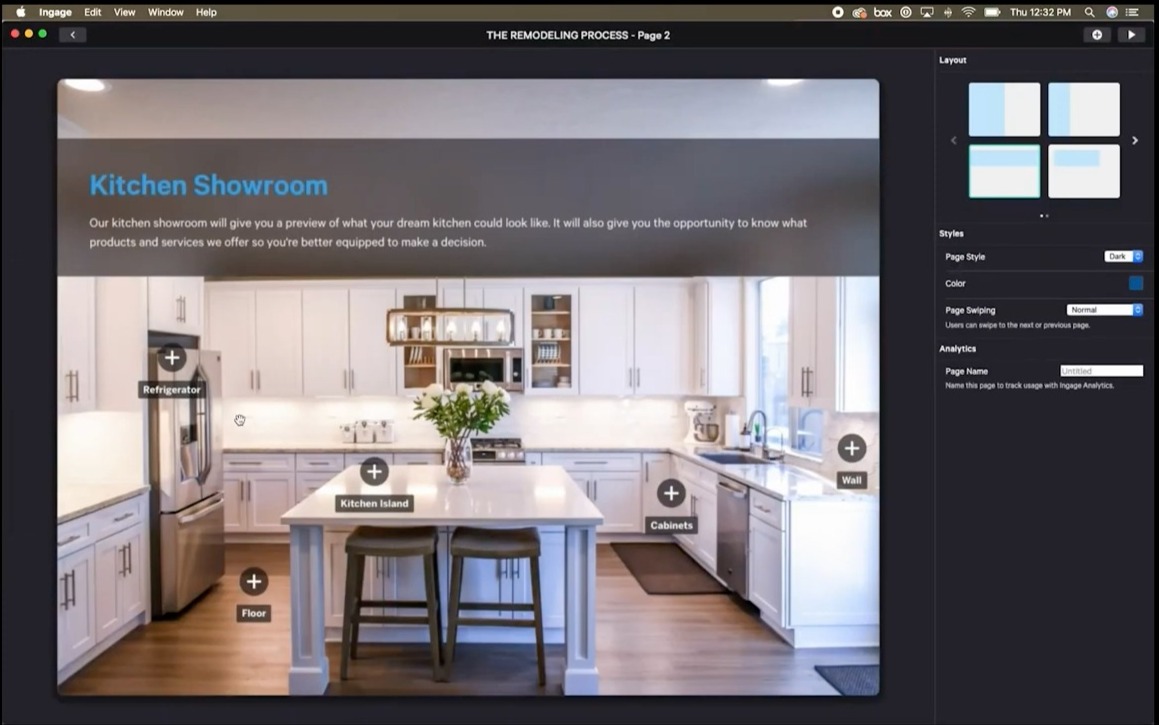How and Why Do You Measure Sales Productivity?
Sales productivity measures how salespeople maximize results while also minimizing the resources used to make the sale. In an ideal world, every member of the sales team is an expert in sales productivity. However, the reality is more like 20/60/20, where the top 20% represent the best, 60% consist of the middle of the pack and the lowest performers make up the remaining 20%.
Improving productivity for the remaining 80% of your team becomes the challenge. Doing so doesn’t require throwing out your current playbook or even infusing new talent. Often, simply improving the workflow and streamlining tasks can work wonders. This includes avoiding static and generic sales presentations that often fail to connect with the audience and keep your team from succeeding.
Evaluate Whether You're Meeting Your Sales Forecast
Forecasting is a standard process that sets the sales team’s target for a given period of time. An accurate forecast is crucial if you want to get optimum performance from your salespeople. On the other hand, an inaccurate sales forecast may mean poor planning from management. An overly low target is as frustrating as an overly high target, as both mean low sales productivity.
Once you’ve determined that your company’s sales forecasts are accurate, the responsibility falls on the sales team to hit the targets. If they can’t, despite the numbers saying the potential is there, it’s an indication of poor sales productivity. If you find this is the case, one area to consider enhancing is the sales presentation. Analyzing your current sales presentations to determine whether or not they are effectively connecting to your target audience is a great starting place for improving sales productivity.
How Do You Measure Sales Productivity?
Technically, sales productivity is the ratio of output versus input. A bigger ratio means better results with fewer resources, and vice versa. Check on your team’s regular activities to determine their ratio. During a normal week, what activities take up the bulk of their time? Do they conduct more selling activities or more non-selling ones? Even more importantly, how much time do they spend actually selling directly to clients?
According to Hubspot, a typical salesperson spends only 34% of the day making sales calls. The rest of the workday is spent on non-sales activities, including writing emails (21%), data entry (17%), prospecting leads (17%), attending meetings (12%), and scheduling calls (12%). On some workdays, training and industry research also take sizable amounts of time.
With less than half the time selling, it’s no wonder that only 24.3% of salespeople managed to exceed their quota last year. These high performers followed the inverse ratio between selling and non-selling activities. Once they spent more time focused on selling, quotas became easier to fill.
Do you think focusing on the virtues of a product or service is the most surefire way to get a sale?
While 19% of average to below-average salespeople pitch to clients praising the virtues of their products, only 7% of top sellers perform a similar pitching method. While making a pitch isn’t a bad idea by itself, top sellers learn to leave the pitch behind. Instead, they engage clients in conversations. They listen to their needs and provide expert advice. They don’t depend on canned presentations and hard sell scripts. This way, clients perceive them as partners towards a solution and not a salesman out to push a product. Put yourself in the client’s shoes and you’ll realize the distinction between trusted advisor and sales rep.
Insights From Your Sales Materials/Digital Content

Understanding individual client needs instead of dropping a one-size-fits-all presentation gives the impression of a tailored solution. At the same time, showing static presentations can often lead to disengaged prospects after the first few minutes.
Are you familiar with TED Talks? These inspiring stories told first hand by experts and authorities share one thing in common. Each presentation does not exceed 18 minutes in length. As early as the 1980s, scientists already knew about this kind of cognitive backlog where the more information piled on a person, the more likely they are to forget that information.
Neuroscientists noted that people start to disengage from a presentation within ten minutes on average. While this doesn’t mean you should stop your pitch before the ten minutes are up, it means that the 10-minute mark is the best time to re-engage the audience. 18 minutes remains the sweet spot, and keeping your presentations under that time bodes well for your sales productivity.
Presenting an idea is often hampered by time limits imposed by clients’ busy schedules. This is why reviewing sales materials continuously is key to ensuring that content can connect with specific audiences. While customizing each presentation to suit individual prospects is ideal, it isn’t always practical. Instead, making sales presentations flexible, dynamic and engaging can help retain clients' interest. Flexibility means sales presentations don’t necessarily run in a linear direction but instead allow the salesperson to skip some parts or expand on others depending on the client’s reaction.
Dynamic presentations have to go further than your typical PowerPoint presentation with static images and boring video inserts. Instead, they should have visual elements that can respond to clicks, with rich videos that play automatically. Most importantly, engaging sales presentations should be able to tell the customer’s story and allow clients to interact without breaking the pace.
Insights Via Analytics
At the same time, sales materials and presentations should always open themselves to further examination. Analytics can provide a deeper study on which elements in the presentation work and which ones do not. Embedding analytics in the presentation software allows companies to determine which parts are the most engaging for clients. They can also show which slides and presentations get used by the sales team, especially which ones are most popular. Together, these pieces of information can help the sales team continuously fine-tune their materials before sharing them with clients.
How Do You Make Every Sales Rep Your Best Rep?

Making every sales rep your best rep is a matter of increasing their sales productivity. Providing your sales team with the right tools and solutions for creating presentation materials is a step in the right direction. Ingage helps create interactive content that engages clients who took the time to listen. With more than a decade’s experience in digital storytelling, Ingage lets you graduate from static PowerPoint-type presentations and develop flexible, compelling and engaging stories that your clients want to hear. The powerful analytics feature allows you to track which presentations get the job done and how much time sales reps and clients spend on each deck.
To learn more about Ingage and how it can help increase your company’s total sales productivity, contact us for a demo.
